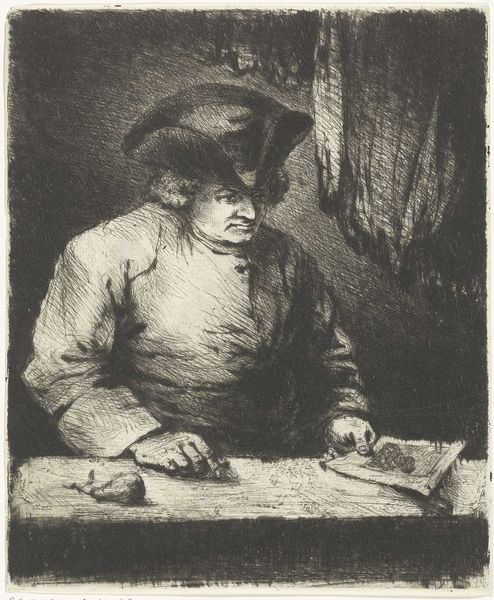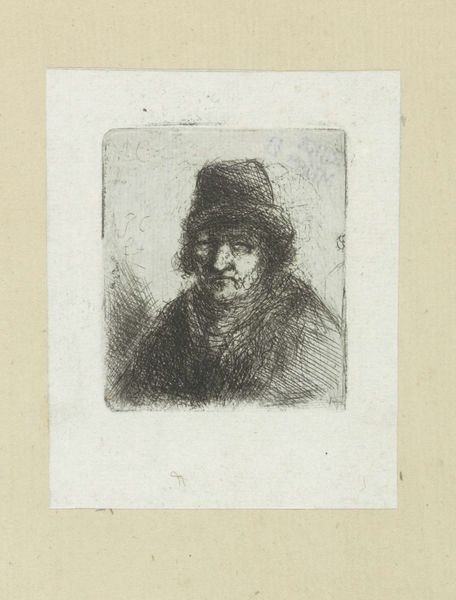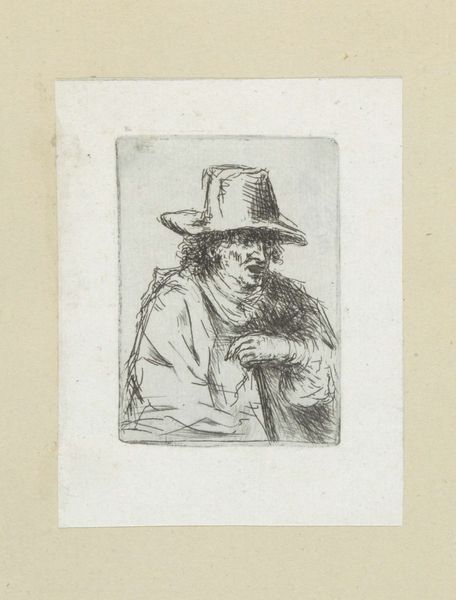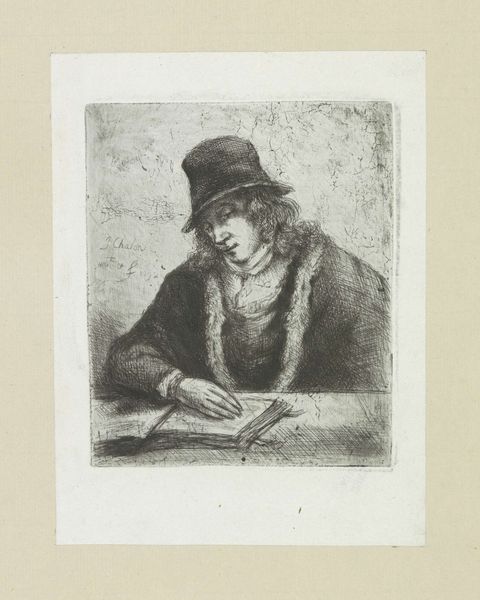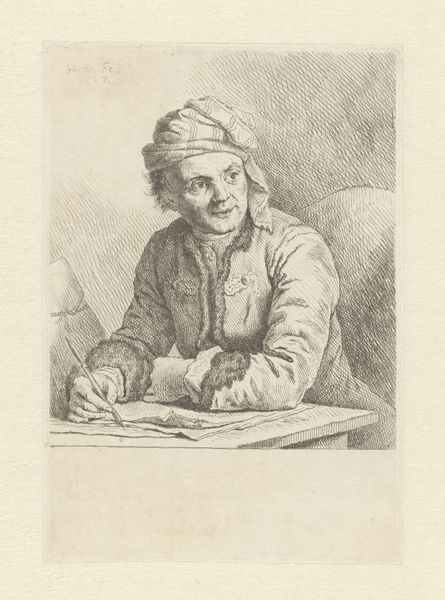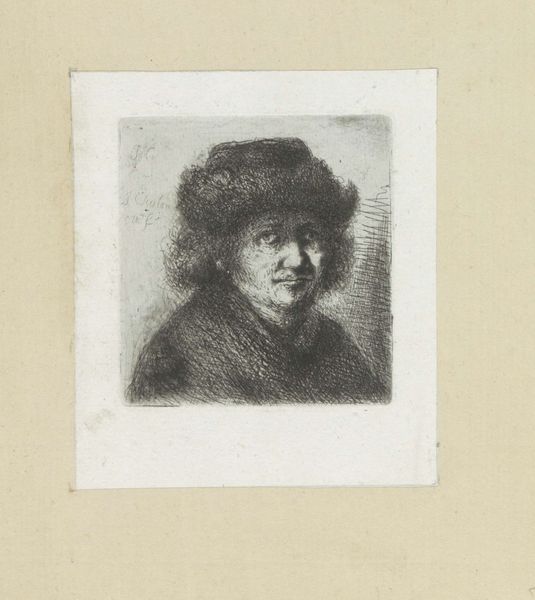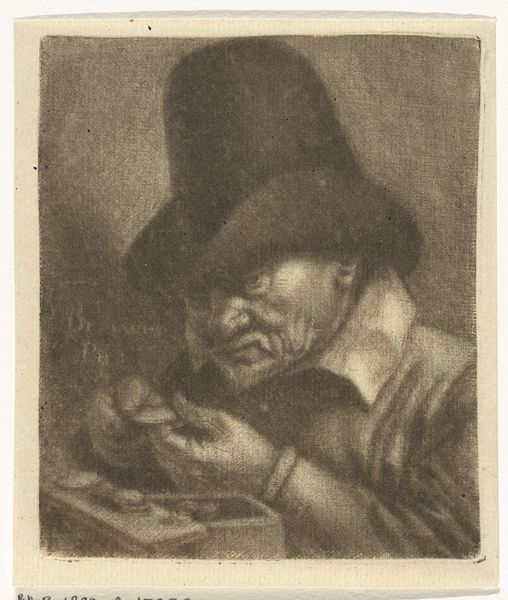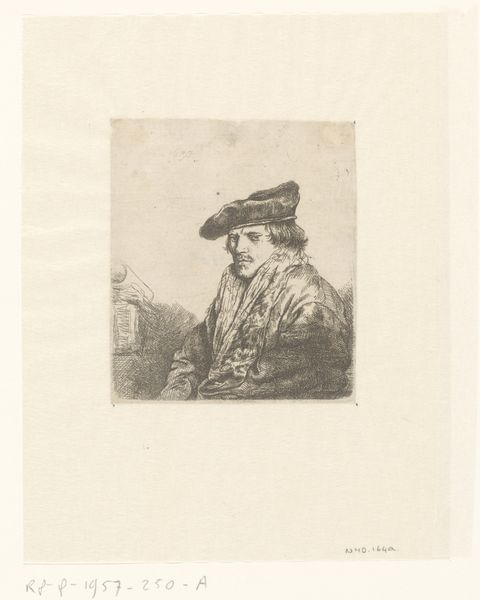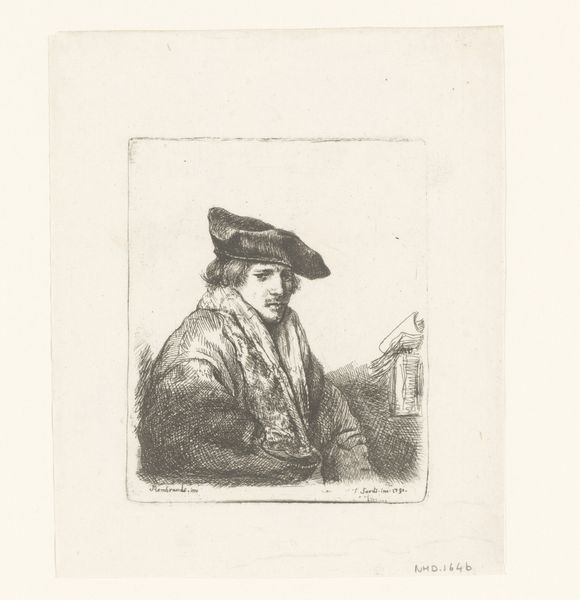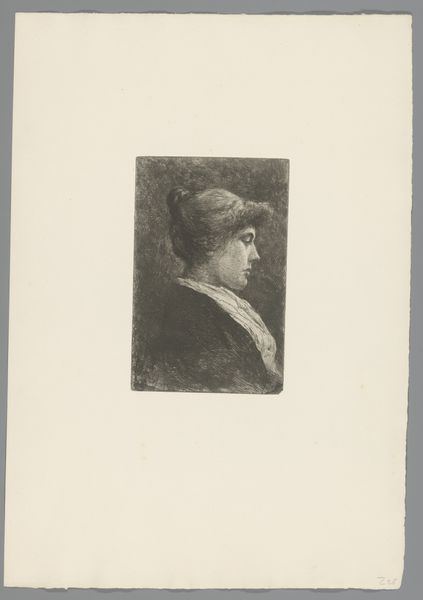
print, engraving
#
portrait
#
dutch-golden-age
# print
#
form
#
portrait reference
#
line
#
portrait drawing
#
engraving
Dimensions: height 198 mm, width 165 mm
Copyright: Rijks Museum: Open Domain
Editor: This is Jan Chalon's "Portret van Hendrik Chalon," made sometime between 1789 and 1802. It's an engraving, so a print. The detail is incredible! What really strikes me is how the light emphasizes the sitter’s hands and face. How do you approach a piece like this? Curator: What I see first is the labor involved in its production. Consider the meticulous engraving process; each line etched represents hours of work, a direct engagement with the copperplate itself. The material reality of that labor is something often overlooked when we consider artistic merit. Editor: So, you're focusing on the "making of" rather than just the "image"? Curator: Precisely! And we can then ask, "For whom was this made?" Printmaking democratized images. It wasn't just for the wealthy, like painted portraits. Think about the societal impact of being able to reproduce and distribute likenesses. This expands portraiture's role. Editor: That’s fascinating. So, it's not just about who Hendrik Chalon was, but who could access his image? What about the ink and paper used? Did those have an impact on the artwork’s dissemination? Curator: Absolutely. The quality of the paper, the availability of the ink – these were all factors determining the accessibility and longevity of the print. Examining these material constraints can offer insights into the art market and the wider economy of the period. Did this printing exist merely for patronage, or commercial appeal? Editor: I never thought about it that way before. It’s like the artwork is part of this whole network of production and consumption. Curator: Exactly! And it pushes us to think beyond just the artist’s intention. We can start to see the material world influencing not just the process, but also who gets to see art and how they interpret it. Editor: Wow, I'll definitely be looking at prints differently now. Thanks for showing me that other dimension to it. Curator: My pleasure. Keep an eye on the labor.
Comments
No comments
Be the first to comment and join the conversation on the ultimate creative platform.
